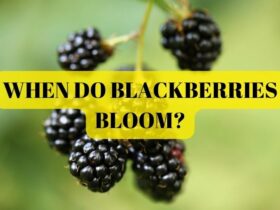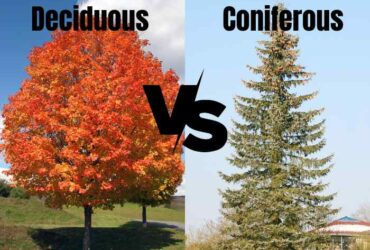Having a diversity of plants in your backyard not only increases the aesthetic of your house but also impacts your mood and way of living. Out of many plants that allow privacy along with beauty are magnolias.
Magnolias are lovely and widely used ornamental trees that add charm and personality to any landscape.
Magnolias are a favourite among gardeners and landscapers because of their fragrant and eye-catching flowers. Choosing a suitable magnolia for your garden can be difficult because so many varieties are available.
In this article, we will look at Magnolia Little Gem Vs Teddy Bear Magnolia in detail, so stick to the end!
Magnolia Little Gem
You might wonder what a magnolia little gem looks like. It might have gems hanging from it, or its leaves look like gems. Well, here’s how it looks.
It is a small green plant that can grow to a height of 20 feet or 6 metres. Moreover, it possesses a maximum width of 10 to 12 feet (3 to 3.6 metres).
Magnolia little gem grows densely and symmetrically. As far as its leaves are concerned, they are glossy, dark-green leaves that range in size from 2-3 inches (5-7.5 cm) wide to 3-6 inches (7.5-15 cm) long.
It blooms from late spring to early summer with a profusion of large, fragrant, creamy white flowers measuring up to 8 inches (20 cm) in diameter.
Teddy Bear Magnolia
Another well-liked magnolia variety is the “Teddy Bear,” distinguished by its large, showy flowers and compact growth. It is a deciduous tree that is marginally smaller than Magnolia ‘Little Gem’, reaching heights of 15 feet and a width of 10 feet.
It blooms from the end of spring to the beginning of summer, and its glossy, dark green leaves. The flowers are big, white as cream, and fragrant.
This tree enjoys moist, well-drained, slightly acidic soil. Zones 5 to 9 are suitable for hardiness and can tolerate shade.
Magnolia “Teddy Bear” needs little upkeep and pruning, and it’s immune to most pests and diseases. It is a fantastic option for mixed borders, specimen trees, and small gardens or landscapes.
Maintenance of Magnolia Little Gem Vs Teddy Bear Magnolia
Maintaining a magnolia little gem vs teddy bear might have the exact steps to follow. Let’s have a look at the maintenance guide.
Magnolia’ Little Gem’
Watering
Magnolia’ Little Gem’ prefers moist soil, especially during its first year of growth. After it’s established, it can tolerate some drought conditions but still prefers regular watering during periods of extended dryness.
Fertilising
Magnolia’ Little Gem’ benefits from fertilisation before emerging new growth in the early spring. Use a fertiliser specially formulated for trees with a slow-release, balanced formula.
Pruning
Magnolia’ Little Gem’ needs very little pruning, but you can eliminate any dead or broken branches in the early spring before new growth appears. In late winter or early spring, prune the tree to give it the desired shape.
Pests and diseases
Most pests and diseases don’t typically harm Magnolia “Little Gem.” But scale insects should still be watched out for; if necessary, horticultural oil sprays can be used to eliminate them.
Magnolia’ Teddy Bear’
Watering
Magnolia’ Teddy Bear’ prefers moist soil, especially during its first year of growth. After it’s established, it can tolerate some drought conditions but still prefers regular watering during periods of extended dryness.
Fertilising
Magnolia’ Teddy Bear’ benefits from fertilisation in early spring, just before the new growth appears. Use a slow-release, balanced fertiliser that’s specifically formulated for trees.
Pruning
Magnolia “Teddy Bear” only needs a little pruning, but you can eliminate any dead or damaged branches in the early spring before new growth appears. In late winter or early spring, prune the tree to give it the desired shape.
Pests and diseases
Generally, the magnolia ‘Teddy Bear’ resists most diseases and pests. But scale insects should still be watched out for; if necessary, horticultural oil sprays can be used to eliminate them.
Magnolia Little Gem Vs Teddy Bear Magnolia

Both the Magnolia ‘Little Gem’ vs the Magnolia’ Teddy Bear’ are well-known magnolia cultivars, but they have some key differences. Here’s a comparison of the two trees:
Size
The small to medium-sized tree known as the “Little Gem” magnolia can reach heights of 20 to 25 feet and widths of 10 to 15 feet. On the other hand, the Magnolia’ Teddy Bear’ is a small, slowly-growing tree that only grows between 8 and 10 feet tall and 5 to 6 feet wide.
Shape
Magnolia’ Little Gem’ has an upright pyramidal shape, has a single central leader, and has thick foliage. In contrast, the Magnolia’ Teddy Bear’ is bushy, rounded, and has a dense, compact canopy. It also has multiple stems.
Leaves
Both trees’ enormous, oblong, glossy, and dark green leaves are enormous. Magnolia, ‘Teddy Bear leaves are slightly smaller than those of Magnolia ‘Little Gem,’ which has slightly wavy leaves and slightly larger leaves overall.
Flowers
Both trees bear their large, fragrant, white or cream-coloured flowers in the late spring or early summer. While the flowers of Magnolia ‘Little Gem’ are somewhat more extensive and more cup-shaped than those of Magnolia’ Teddy Bear,’ they are otherwise very similar.
Hardiness
Magnolia “Little Gem” can survive in USDA zones 7 to 10, while Magnolia “Teddy Bear” can survive in USDA zones 5 to 9. As a result, Magnolia “Teddy Bear” can withstand colder climates, while Magnolia “Little Gem” prefers warmer environments.
Tolerance to conditions
Magnolia “Little Gem” is more resistant to smog, heat, and drought than Magnolia “Teddy Bear.” While Magnolia “Teddy Bear” can tolerate some shade, it is more resistant to cold temperatures.
Magnolia Little Gem Vs Teddy Bear Magnolia: Tabular Difference
To make it easier for you, here is in tabular form:
| Characteristics | Magnolia ‘Little Gem’ | Magnolia ‘Teddy Bear’ |
| Size | Small to medium-sized tree, 20-25 ft tall and 10-15 ft wide | Compact, slow-growing tree, 8-10 ft tall and 5-6 ft wide |
| Shape | Upright, pyramidal shape, with a single central leader and dense foliage | Bushy, rounded shape, with multiple stems and a dense, compact canopy |
| Leaves | Large, glossy, dark green, slightly wavy margin | Large, glossy, dark green, oblong in shape |
| Flowers | Large, fragrant, white or cream-coloured, cup-shaped | Large, fragrant, white or cream-coloured |
| Hardiness | USDA zones 7-10 | USDA zones 5-9 |
| Tolerance to conditions | Tolerant of heat, drought, and urban pollution | Tolerant of cold temperatures and some shade |
| Characteristics | Magnolia ‘Little Gem’ | Magnolia ‘Teddy Bear’ |
Wrapping Up!
Magnolias from the “Little Gem” and “Teddy Bear” varieties make beautiful additions to any garden or landscape. Due to their unique qualities and benefits, any outdoor space can appear more beautiful and elegant.
Consider the size of your garden or landscape, the amount of sunlight the tree will receive, and your preferences for the flowers’ looks and scents when deciding between the two.
Whether you choose the Magnolia ‘Little Gem’ or the Magnolia’ Teddy Bear,’ both trees are easy to maintain, resistant to most pests and diseases, and suitable for use as specimen trees, focal points in gardens, or mixed borders. Your home and garden will look better for many years if you add one of these magnificent magnolias to your outdoor space.
FAQs
Which magnolia is the best?
Since it depends on personal preferences and unique growing circumstances, no single “best” magnolia exists.
What is the strongest-smelling magnolia?
The Southern Magnolia, or Magnolia grandiflora, is well-known for its potent and enticing scent.
How tall does magnolia Teddy Bear grow?
Magnolia “Teddy Bear” can reach 3 to 4 metres (10 to 13 feet).
For more such information, follow Kitchen and Gardening!














Leave a Reply